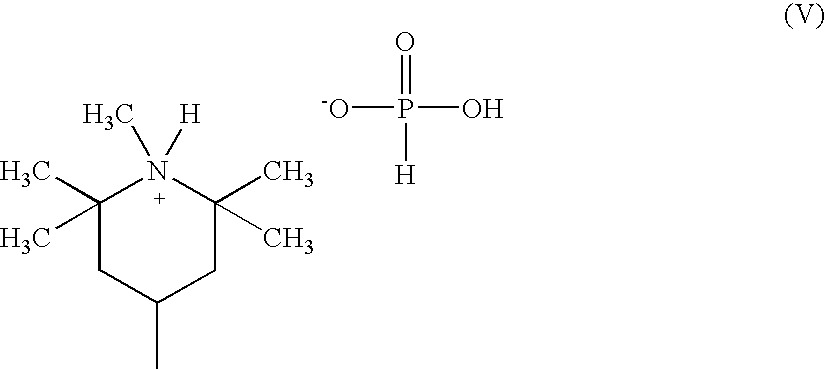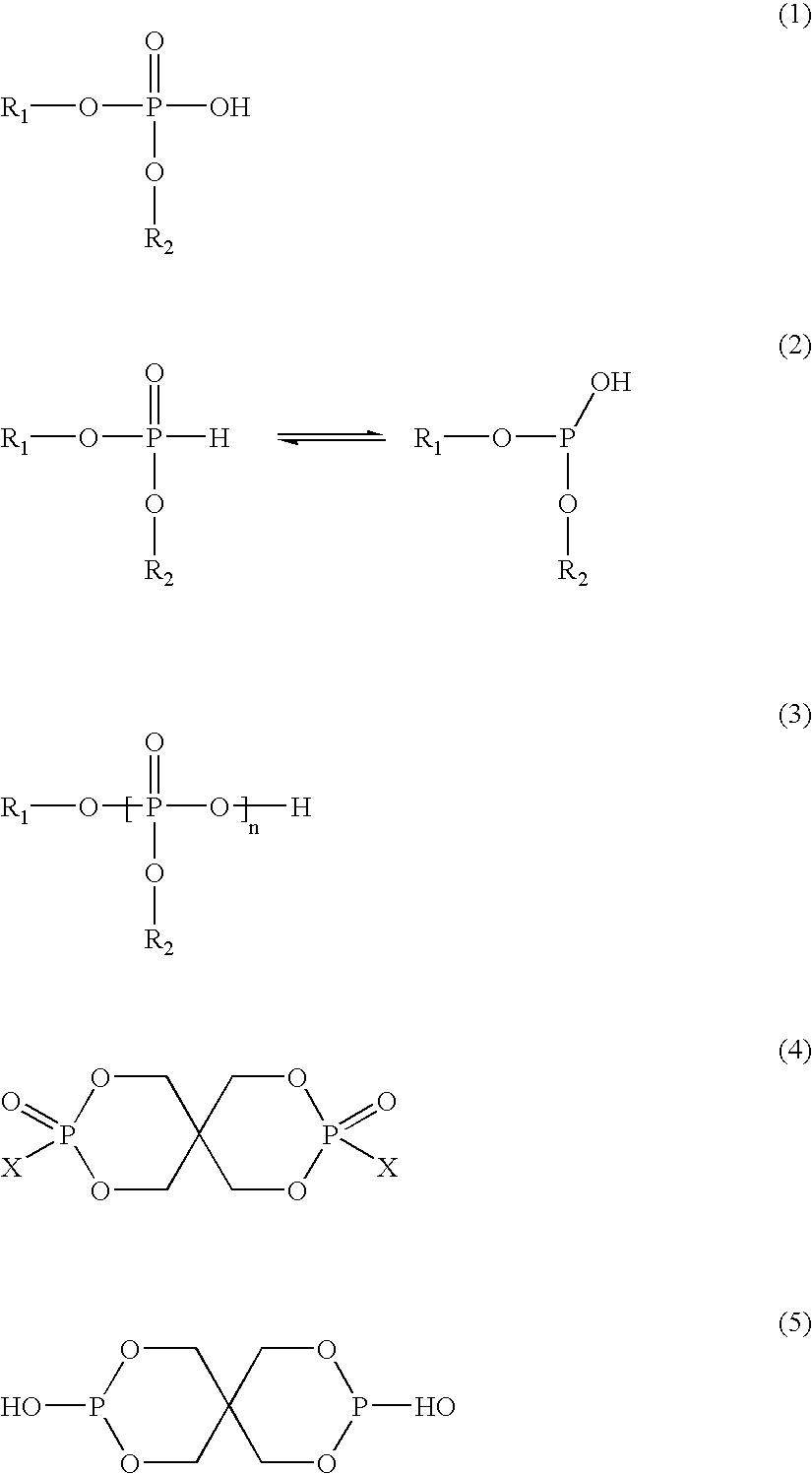Polyester polymers with low acetaldehyde generation rates and high vinyl ends concentration
- Summary
- Abstract
- Description
- Claims
- Application Information
AI Technical Summary
Benefits of technology
Problems solved by technology
Method used
Image
Examples
example 1
[0196]The oligomer and procedure used are described at the beginning of the Examples section. The antimony solution and the lithium / aluminum mixtures used are described in Comparative Example 1. The aluminum target is 10 or 25 or 40 ppm. The target Li:Al mole ratio is 1, 3 or 5. The phosphorus to metals mole ratio (P:M MR) target is 0, 0.5 or 1, where the moles of metals in the denominator are the sum of the Li moles plus the Al moles.
[0197]Where the P:M MR is not equal to zero in Table 2, 85% phosphoric acid is added in Stage 14 of the following polymerization array. Depending on the phosphorus target, 85% phosphoric acid is added without dilution for higher targets or as a 50:50 or 1:1 solution of 85% phosphoric acid and Millipore water for lower targets. An exception is Sample 12 where a 75:25 phosphoric acid (85%): Millipore water solution is used.
[0198]The polymerization reactor is operated under control of a CAMILE™ automation system, programmed to implement the following arra...
example 2
[0214]To make the phosphorous acid salts of CyasorbUV 3529, two moles of phosphorous acid were used per mole of CyasorbUV 3529, and reacted per the following procedure. The salts can be manufactured according to the description in per copending U.S. application Ser. No. 10 / 392,575, which is fully incorporated herein by reference.
[0215]To a 5-L, round-bottomed flask equipped with a mechanical stirrer, thermocouple, and a heating mantle is added 411.76 g of Cyasorb UV-3529 and 945 g of toluene. Cyasorb UV-3529 is a polymeric hindered amine light stabilizer believed to conform generally to the compounds of amine formula (12) set forth previously, where R6=R7=R8=R9=R10=methyl; L1 is hexamethylene; and (R3)(R4)N— collectively represent a morpholino group (see also formula 21). The slurry is heated to 60° C. and stirred until a homogeneous solution was obtained. Isopropyl alcohol (370 g) is added to the reaction vessel. A solution of 115.46 g (1.41 mol) of phosphorous acid dissolved into ...
example 3
[0224]This example uses the melting blending procedure, starting polymer, product work-up and the phosphorous acid salt of CYASORB UV 3529 described in Example 2. In addition, after cryogenically grinding the polyesters, residual AA samples are kept frozen until tested.
[0225]A series of polymers were prepared, employing various levels of the phosphorous acid salt of CYASORB UV 3529. The results are presented in Table 5, where the fifth column from the left is the inherent viscosity (IhV) in dL / g.
TABLE 5Cyasorb%UV 3529-Reduced%H3PO3TiPIhVResidualResidualAAGENReducedVEGSampleAmt gppmppmdl / gAA ppm.AA295 / 5 ppmAA Genμeq / g1701010.74417.210.0035.320.000.3180.0210160.7164.4574.1410.0771.490.8190.0410290.7238.0753.119.2773.751200.0610390.726.1164.5010.2870.891.1210.0810460.7144.1475.947.479.050.8220.110610.6874.3274.907.6178.450.9
[0226]Table 5 indicates that even at a very low concentration of the additive, 0.02 weight percent target for the additive, or 16 ppm P, the phosphorous acid salts ...
PUM
| Property | Measurement | Unit |
|---|---|---|
| Fraction | aaaaa | aaaaa |
| Fraction | aaaaa | aaaaa |
| Fraction | aaaaa | aaaaa |
Abstract
Description
Claims
Application Information
 Login to View More
Login to View More - R&D
- Intellectual Property
- Life Sciences
- Materials
- Tech Scout
- Unparalleled Data Quality
- Higher Quality Content
- 60% Fewer Hallucinations
Browse by: Latest US Patents, China's latest patents, Technical Efficacy Thesaurus, Application Domain, Technology Topic, Popular Technical Reports.
© 2025 PatSnap. All rights reserved.Legal|Privacy policy|Modern Slavery Act Transparency Statement|Sitemap|About US| Contact US: help@patsnap.com



